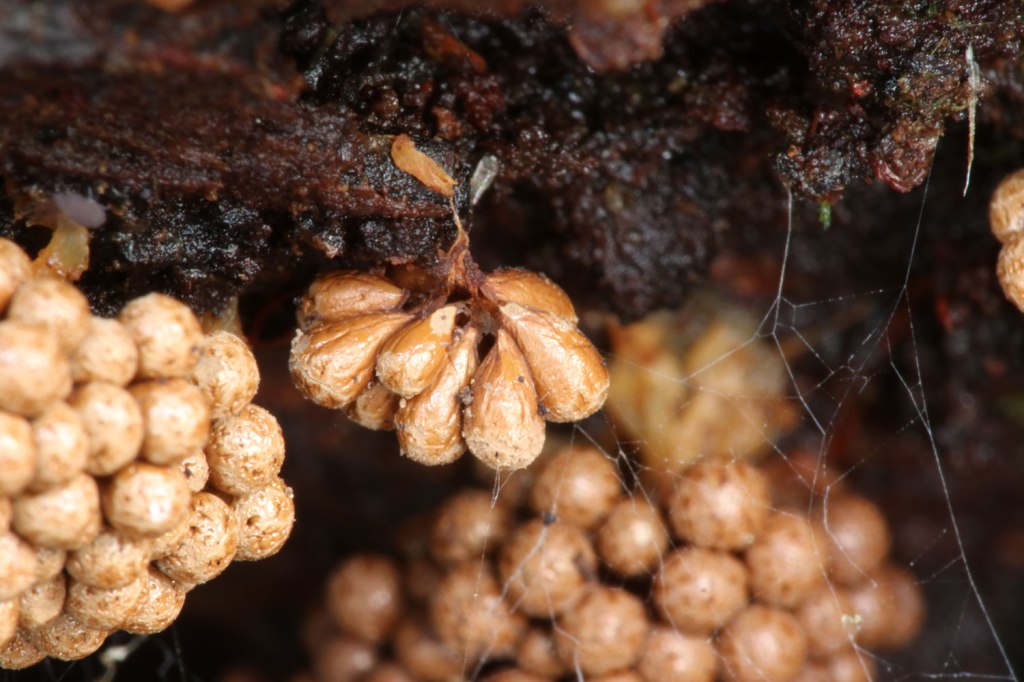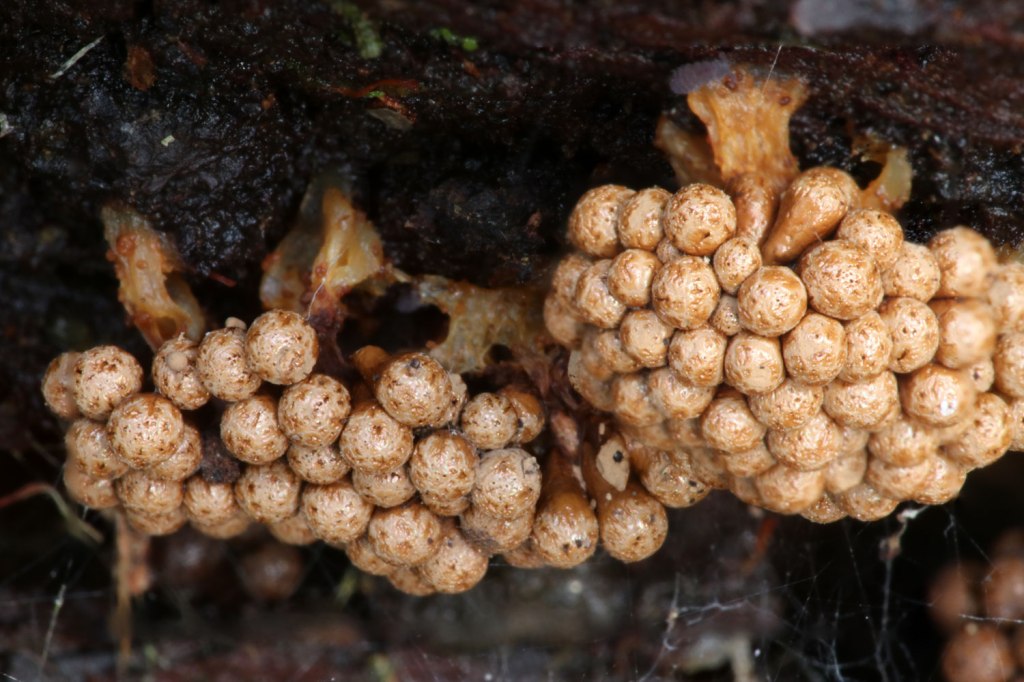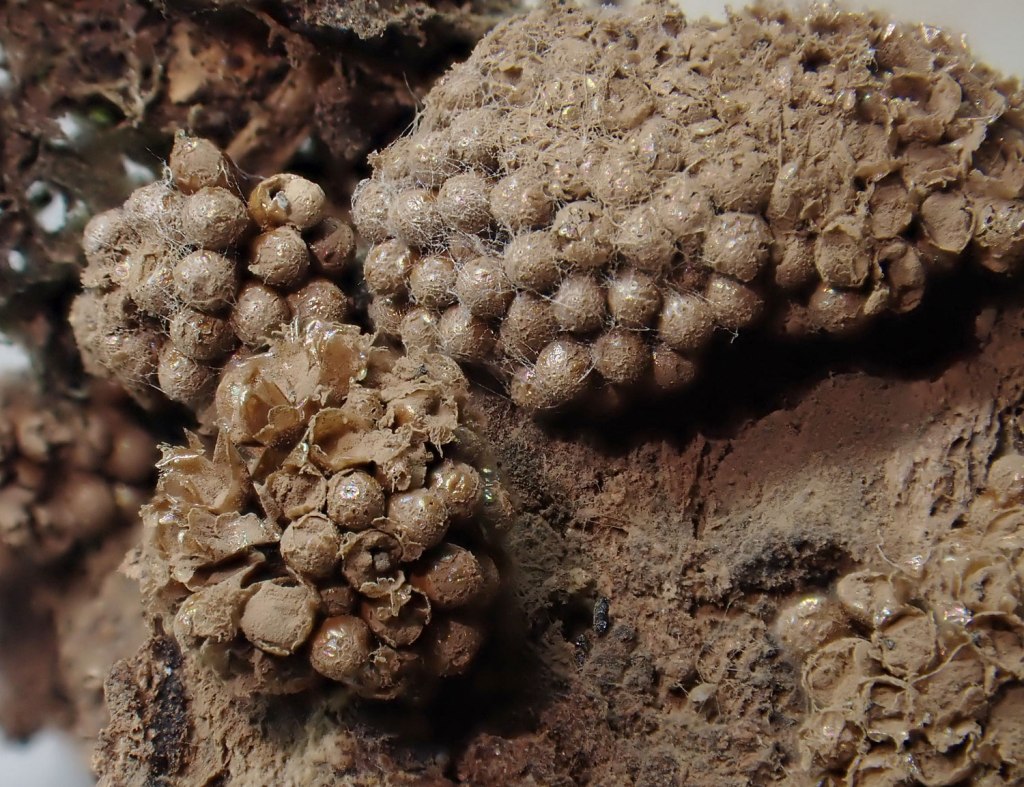Update March 2023 DNA sequencing identified my specimens Alwisia repens (Prof. Dmytro Leontyev, personal communication 8 March 2023)
17 May 2020 A newly formed myxomycete appeared on a log I walk past every day. It was a different colour to anything I’ve seen previously – some fruiting bodies were white and others dark brown – but its multiple sporothecae on coalescing stalks were vaguely reminiscent of Oligonema verrucosum (formerly Trichia verrucosa), a common species in Australia. I started taking a series of photos to track its development.

By 18 May the fruiting bodies were creamy white but by 20 May most were a light tan colour although some in a more sheltered location remained dark brown.









Above: Alwisia repens developing in the field showing changing colours as the sporocarps mature. Mature sporothecae have a long calyculus, speckled peridium and lack the capillitium bristles of A. lloydiae.
9 June – the fruiting bodies had not dried to the bright yellow of O. verrucosum so I examined them more closely. The colour of the spore mass was similar to Alwisia lloydiae, but the larger size, speckled peridium, irregular dehiscence and longer calyculus were different to A. lloydiae, a common and familiar species at Black Sugarloaf at all stages of its development. However, to eliminate that species I collected one sporocarp to check for the bristle-like capillitium arising from the calyculus, one of the key features of A. lloydiae.
The lack of the capillitium arising from the edge of the calyculus eliminated A. lloydiae, and the sporangia on coalescing stalks was not a feature described in the paper describing the other Alwisia known from Australia, Alwisia repens. However, the slime mould keyed out to Alwisia.








In 2022 I sent spores for sequencing to Professor Dmytro Leontyev and they compared favourably with Alwisia repens, thus confirming the identify of my collections.
My collection does not conform to the description of the holotype, which demonstrates the desirability of having numerous collections when describing new species. For instance the stalks in my collections were not ‘horizontally directed, often adhering to the substrate’, the feature which was used to name the taxa; repens (lat.) prostrate, creeping, referring to the appearance of the stalks.
Reference:
Lado, C. (2005-2023). An on line nomenclatural information system of Eumycetozoa. Real Jardín Botánico, CSIC. Madrid, Spain. https://eumycetozoa.com (consulted 18 March 2023).
Additional sightings on inaturalist: